Indochine 1954
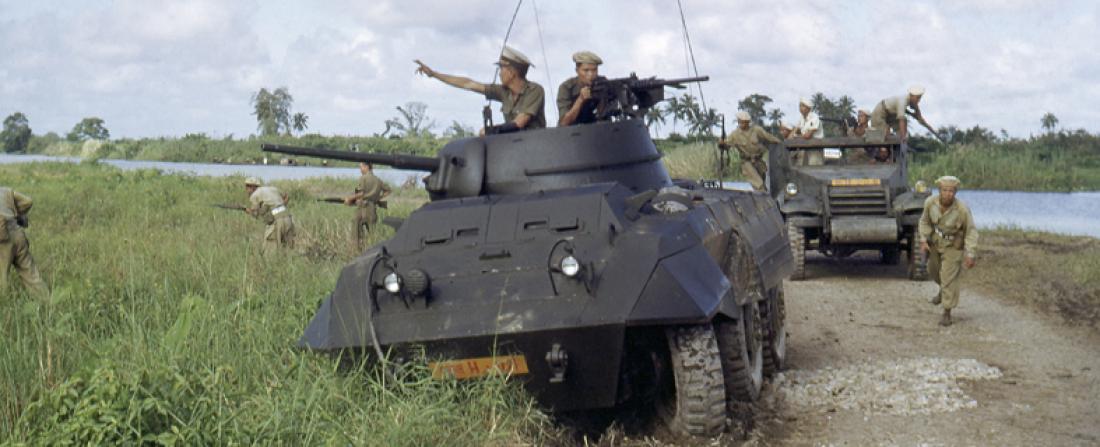
In 1954, the French army was involved in fierce fighting at Dien Bien Phu in what was its last major battle in Indochina. With the opening of the international conference in Geneva, this defeat precipitated the end of the war and that of the French presence in the region.
On 7 May 1954, after 56 days of fighting, the entrenched Dien Bien Phu camp fell. The next day, newspapers in France took hold of the event and the French defeat was making the headlines in every paper. A part of public opinion was dismayed and could not understand it: the war in Indochina was now making France sit up and take notice in a especially cruel way on this the anniversary of the German surrender. The political class of the Fourth Republic - with the exception maybe of the Communists - along with many military who did not know much about the reality in Indochina were asking themselves the now famous question: "Why Dien Bien Phu?".
The French Army in an impasse
"On the other side of the Hill", the victory of the Vietnamese people's Army (VPA) was celebrated with fervour. For all Vietnamese who had espoused the cause of the Viet Minh, Dien Bien Phu represents an important step towards peace, while for many still colonised peoples it was a symbol of hope. Yet, for Paris, the fall of the Dien Bien Phu entrenched camp is not an insurmountable loss since the forces engaged - and therefore lost - in the course of the battle accounted for less than 3.3 percent of the 450,000 fighters that France and its allies then had facing the Viet Minh. In fact, the psychological shock was such that it further strengthened the political will to put an end to the conflict and speeded up its conclusion.
In the spring of 1953, the Indochina conflict entered its eighth year. The numerous Governments never really set clearly defined goals for this war. While it was no longer a question of restoring the old colonial order, was the idea to build a genuine French Union, something that would be a burden for the country from every point of view or were we fighting on behalf of the "free world" against international communism? No one really knew, but for many officers there was little doubt that, victorious or defeated, it would not be long before France had to leave.
From a military point of view, the war was in a rut. Since 1946, the French had gradually lost the initiative in the face of the Viet Minh and military command was content to try to minimise the impact of the blows, something they did with varying degrees of success. The victories in the "year of Lattre" - 1951 - seemed very far away and 1952 was marked by no significant advances.
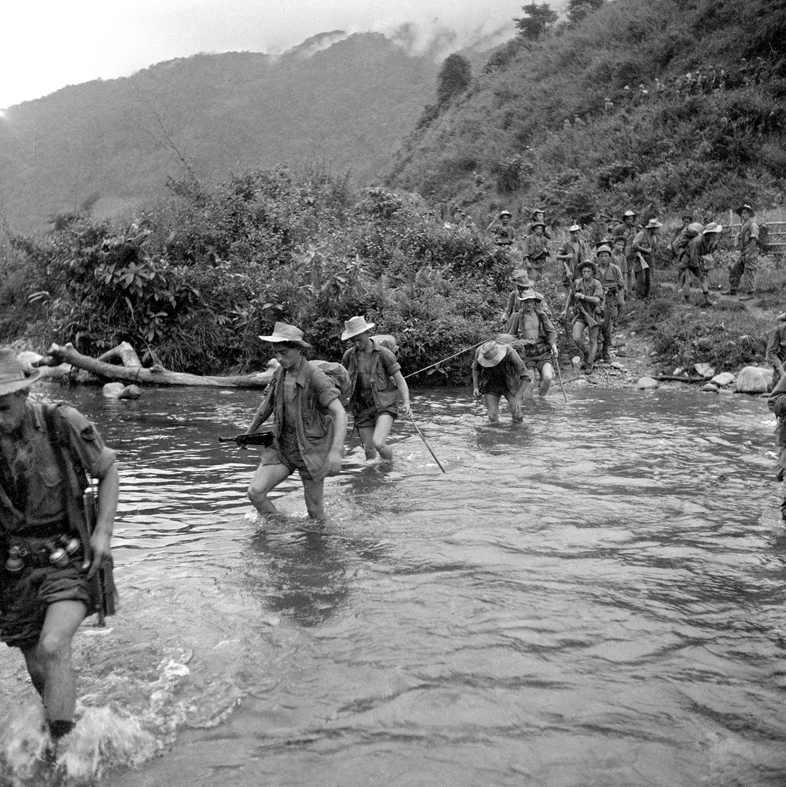
Crossing of the Nam Nim river by elements of the 2nd foreign parachutist battalion, October 1951. © ECPAD
The press releases proclaiming victory after the battle of Na San should not overshadow the fact that the defensive success achieved was in reality no way satisfactory. As Marshal Juin wrote a year after the events: "We got off thanks to the value of our command and our troops, but the fact remains that the results [are] mediocre".
Find “an honourable exit” from the conflict
In fact, even General Gilles who commanded at Na San reportedly told his staff: "Never, ever again, should we get into a similar situation"... While some pacification progress was being made in South Viet Nam enabling some provinces to be transferred to the battalions of the national Vietnamese army, in Centre-Annam and even more so to the North of the country, the increasingly dangerous threat posed by the Viet Minh augured bad for the future. The situation continued to deteriorate and the "rot" in the Tonkin delta, as the military called it, was spreading every month further afield to such an extent that at the end of that year a General wrote with a certain irony: "It isn't the Viet Minh who are undercover in the delta, it is us"... Many Fourth Republic politicians were looking for a chance to "get the conflict over with", a conflict that had become a real financial drain. It was René Mayer, Chairman of the Council between 8 January and 28 June 1953 who was responsible for putting a new policy in place with the firm intention of getting out of the Indochina quagmire.
This desire for change resulted in the immediate replacement of General Salan. General Salan certainly knew Indochina and the enemy better than most but his strategy was challenged - in particular by the Americans who felt he was too "timid" and not "offensive" enough - and it was especially important to find a man to implement a new policy. This man was to be General Henri Navarre, appointed commander-in-chief on 8 May 1953, whose total ignorance about Indochina would, he was assured, enable him to grasp the situation with "new eyes". General Navarre's mission was clear: he had to find an "honourable exit" from the conflict, i.e. get the Viet Minh to the negotiating table after firstly weakening them politically and militarily.
In order to fulfil this mission, Navarre proposed a two-year plan in which, for the first year - corresponding to the 1953-1954 campaign - the expeditionary forces would take a strictly defensive stance in North Viet Nam merely defending the delta if it was attacked. However, the pacification process was to be continued in the south and major operations would only be undertaken to clean up central Viet Nam, the Viet Minh's famous Lien Khu V (or interzone V). At the same time, general Navarre would strive to transfer security in the safest regions as much as possible to the Vietnamese national army. This policy would enable troops to be redeployed and help rebuild a battleforce worthy of the name capable of opposing general Giap's divisions.
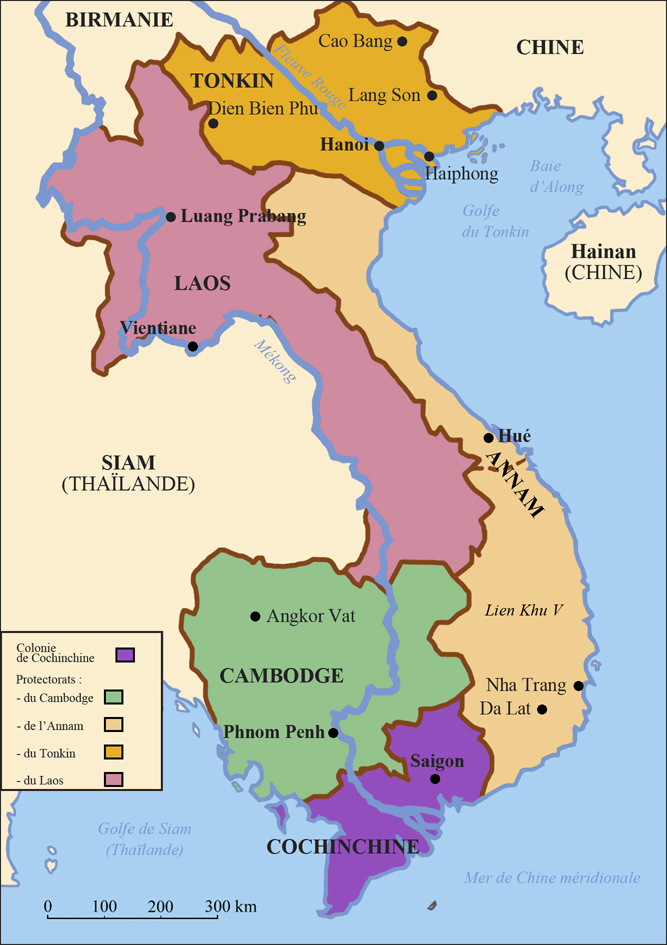
Indochina in 1954. © Mindef/SGA/DMPA/Joëlle Rosello
The second year, 1954-1955 was to mark a resumption of the offensive in the north and with fresh mobile forces, a greater number of Vietnamese formations and increased U.S. aid, the French could hope to inflict serious setbacks on the enemy that would, to quote general Navarre, make "a suitable political solution to the conflict" possible. This plan, greatly inspired in fact by recommendations made by general Salan, was ultimately very theoretical and based on fragile assumptions.
Indeed, for it to have a chance to succeed and achieve the expected results, it was necessary for the Viet Minh to not launch a major offensive towards Laos in the Winter of 1953-1954 and secondly that they should not receive increased aid from Communist China. In fact, shipments of equipment and weapons for the Viet Minh divisions increased substantially within a year. As Pierre Rocolle recapped in his book Why Dien Bien Phu?, the Navarre plan was "designed to be equal to the Viet Minh battleforce in 1954 and to exceed it in the second half of 1954".
The Navarre plan was discussed in Paris in July 1953, firstly on the chiefs of staff Committee, the body that brings together the chiefs of staff of the armed forces (land, air, sea), then in various restricted meetings bringing together the Ministers concerned by the Indochina question. There were no major objections to it. Curiously, while the plan was not formally approved, the Commander-in-Chief in Indochina still did not receive any clear instructions as to the policy the Government intended to apply. So, when Navarre raised the question about the strategy that should be implemented if Laos is threatened, his question remained unanswered.
The Expeditionary Force encircled in Dien Bien Phu
On the Viet Minh side, the aims of the war remain unchanged; i.e. take power and establish a Communist regime in a reunited Viet Nam. However in autumn 1953, the strategy Giap intended to apply had not yet been decided: an offensive on the delta seemed risky as the French could fully benefit from their firepower safe behind their fortifications all the more since reinforcements were expected to arrive from France. So, at the end of October 1953, the Viet Minh command decided to move the war to the upper Tonkinese region: the goal was to take Laichau, a thai country sector that had remained loyal to the French, and destroy the pro-colonial maquis fighters who had considerably hampered Viet Minh units.
The 316 division and the independent 48 regiment were therefore directed to Laichau. Perfectly informed of the enemy's intentions, general Navarre ordered that Dien Bien Phu valley be reoccupied on 2 November 1953 in order to prevent it from becoming a Viet Minh operational base. At the time it was the only important plain in the rice-fertile region. It was shaped like an ellipse whose north-south axis was up to 17 kilometres long and whose east-west axis was nearly 7 km wide in some places. Operation Castor was finally launched on 20 November 1953: three paratrooper battalions from Airborne Group No. 1 (GAP 1) were dropped and were joined the following days by three other battalions from Airborne Group No. 2 (GAP 2). In the evening of 22 November 1953, 4,560 French and Vietnamese paratroopers took possession of Dien Bien Phu Valley and started to turn it into an "air-land base", i.e. a logistics complex centred around an airfield and defended by outposts.
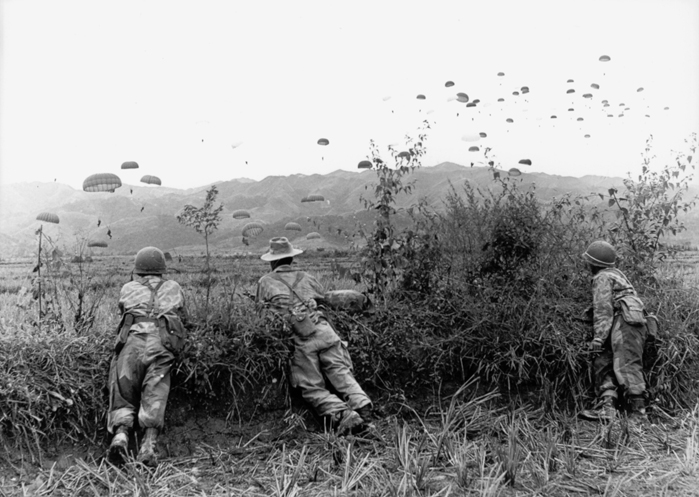
First landing in Dien Bien Phu, Operation Castor, 20 November 1953. © ECPAD
In Navarre's mind, setting up an air-land base at Dien Bien Phu was certainly useful in protecting Laos, but it was also to serve as the starting point for French troops to hit the enemy behind their lines and ultimately draw them far away from the delta where an attack was always possible. General Giap saw the opportunity to win an important victory in this garrison that was fully dependent on airborne supplies: so in the aftermath of operation Castor, he ordered some of his troops to march on Dien Bien Phu. So Dien Bien Phu was not the result of a long, well thought out offensive, but rather the result of decisions and reactions by each of the belligerents.
At the end of the month of December 1953, colonel Christian de La Croix de Castries and the twelve battalions of the expeditionary corps based in the Dien Bien Phu garrison were surrounded. General Giap had massively concentrated a large share of his troops around what had de facto become an entrenched camp: the infantry divisions 308, 312, 316 and part of the 304. Furthermore, the entire 351 infantry division was present with its artillery and anti-aircraft regiments..
The Viet Minh attack
At the end of January 1954, the general finally postponed the attack judging that the conditions for victory were not met. Despite the disappointment of the Viet Minh fighters, eager to put an end to this waiting situation, this postponement was the right decision for the Viet Minh. Indeed, the announcement in mid-1954 of the holding of a conference in Geneva that would notably aim to study "the problem of restoring peace in Indochina", had the consequence of brutally speeding up Chinese aid: weapons, ammunition, trucks and fuel arrived in huge quantities.
Indeed in the Viet Minh camp, arriving at the negotiating table in a position of force required a victory at Dien Bien Phu: this was vital regardless of the human cost. On the eve of the attack, the Dien Bien Phu entrenched camp is a site that impresses visitors - politicians and journalists alike - who come to the site. The defence of Dien Bien Phu was focused on protecting the key element in the system, the airfield, by means of outposts in the hills that were given women's names: Anne-Marie, Béatrice, Gabrielle, Huguette, etc.
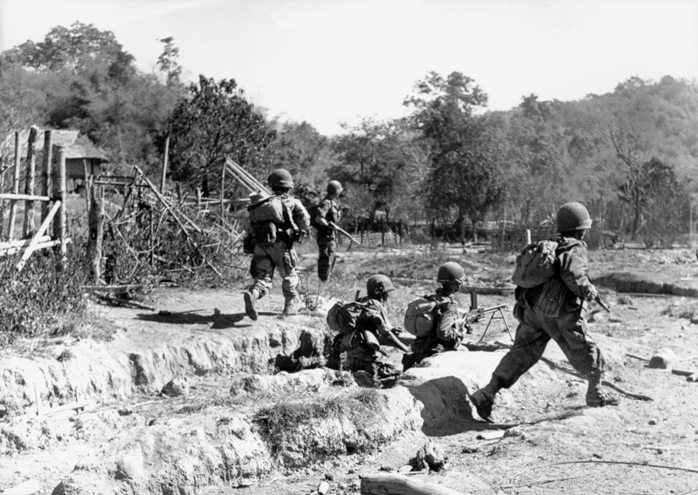
Patrol west of Dien Bien Phu with machine gun battery in 1954. © ECPAD
On March 13, 1954, at 17h10, the Viet Minh artillery opened fire: the battle was underway, it was to last almost two months. While the French were not surprised by the attack, their intelligence services knew what time it was to start, the violence of the attack took them aback. But an even bigger shock was awaiting them when they learned on the morning of 14 March that Beatrice, had fallen. "Beatrice" was defended by what was believed to be one of the strongest battalions in the army: the 3rd battalion of the 13th Foreign Legion demi-brigade. The next day it was the turn of the Gabrielle outpost to fall despite fierce fighting. Roland Mecquenem, Battalion Chief was for a time concussed and recalls when he regained consciousness: "I start to perceive sounds [...] the din of battle first, then closer sounds, moans, cries of pain. [...] I went out by lifting the cloth of the tent that was used as the door. It was still dark, the air was filled with yellow dust. A Dakota [plane] dropped illumination flares one after the other. Friendly and enemy fire criss-crossed: Dien Bien Phu artillery was firing to the north of Gabrielle, where I am. The sight was mind-blowing".
In the days that followed, the defection of a number of Thai soldiers who occupied Anne Marie was the final stage in the capture of the entire northern part of the entrenched camp by the Viet Minh. So Giap had won the first round: he now directly threatened the runway, the lifeline of the French garrison and ceased to operate on 26 March. Only parachute drops could now resupply the French soldiers or reinforce the garrison. The Viet Minh attacks were however very costly for Giap who decided to adopt the tactic of alternating head-on attacks and a gradual sapping of French positions. For this he had his troops build a huge maze of trenches that would literally "suffocate" the entrenched camp.
A major defeat
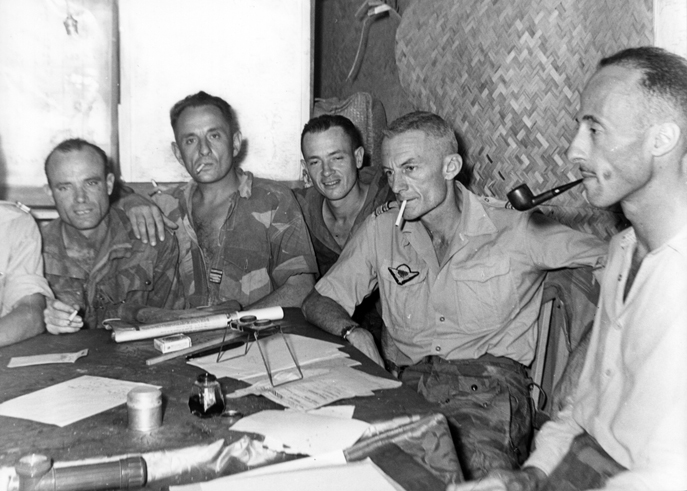
Dien Bien Phu GAP (Airborne Group) staff officers, 22 March 1954. From left to right: Captain Botella of the 5th BPVN; battalion commander Bigeard of the 6th BPC;
Captain Tourret of the 8th BPC; Lieutenant Colonel Langlais, head of the central sector; and commander de Seguins-Pazzis, Colonel de Castries’ chief of staff..© ECPAD
On the night of 30 to 31 March, Giap initiated the second phase of his offensive and this was the start of the so-called battle of the "five hills" east of the fortified camp. The Dominique and Eliane outposts were the subject of furious hand-to-hand combat but keeping them was essential for the French because the fate of the garrison depended on the fate of these two outposts. Ultimately, fighting continued until 10 April 1954 with counterattacks by paratroopers and legionnaires taking back some of the lost positions. However the sapping became even more intense in the second half of April with the coming of rain. For the French, the shrinking entrenched camp made resupplying increasingly precarious and thousands of wounded were crammed into the shelters in unhygenic conditions. On 1 May 1954 General Giap launched the final offensive: the support points, defended by exhausted fighters who were starting to run out of ammunition, fell one after the other. On 7 May, in the late afternoon, after reporting to Hanoi, General de Castries (promoted on 15 April) gave the order to stop fighting. After the fall of the fortified camp it was time to take stock.
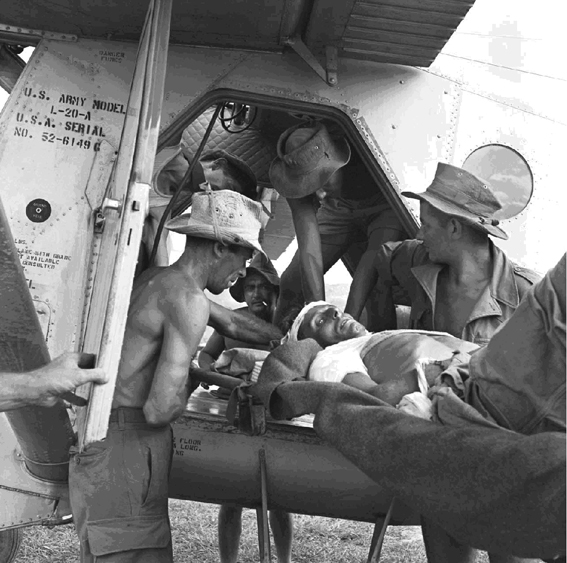
Transfer of a wounded soldier from Dien Bien Phu to Luang Prabang (Laos). © Adrian René/ECPAD
As often when it comes to quantifying losses, the data differed depending on the source and it is difficult to get an accurate estimate. For the expeditionary force that threw 17 of its best battalions into the battle the calculation was not that complicated. On 5 May 1954, we know that 1,142 solders were reported dead and 1,606 were missing. In addition, 4,436 were more or less seriously wounded. To this total must be added the losses of the last two days of fighting, estimated at between 700 and 1,000 men. In all, the Viet Minh therefore captured just over 10,000 men, 60% of these were to die in Viet Minh camps from malnutrition, disease and physiological misery. As for the VPA, although Viet Nam still officially only acknowledges 4,020 dead, 792 missing and 9,118 wounded, the figures widely accepted by historians are some 22,000 dead and injured.
While it was time to take stock and grieve the losses, it was also a time for accountability. On 8 May 1954 General Navarre assumed his responsibilities while also justifying the occupation and the Battle of Dien Bien Phu. This battle saved Laos, the enemy forces were seriously diminished and French forces fixed a total of 33 Viet Minh battalions far from the delta perhaps saving it from disaster.
In this context, while Dien Bien Phu was certainly a tactical defeat, it nonetheless constituted a strategic victory since the goals sought by the commander in chief were ultimately achieved. Indeed this view can be defended and Navarre's arguments are relevant even if he is not totally without blame.
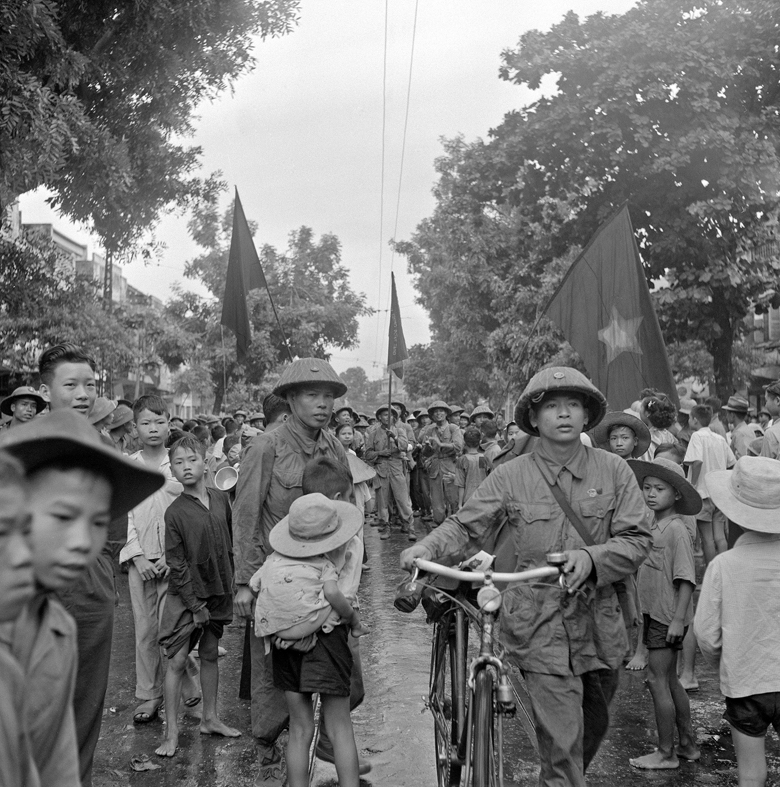
Troops of the Vietnamese People's Army (VPA) enter Hanoi, October 1954. © ECPAD
However, the fall of the fortified camp was a major political and psychological defeat for France regardless of the objective reasons for the defeat - the increase in Viet Minh firepower through Chinese aid due to the announcement of the Geneva conference, the weakness of French aviation and errors in the conduct of battle at all levels. Three months later, on 21 July 1954, the cease-fire ending the First Indochina War was signed in Geneva. Sixty years after the battle, Dien Bien Phu has become a city of some 70,000 inhabitants with remnants of the violent battles that pitted the French against their Viet Minh counterparts still visible here and there. The feats performed on both sides must continue to be maintained in the national memories of both France and Viet Nam in respect of the historical truth.

